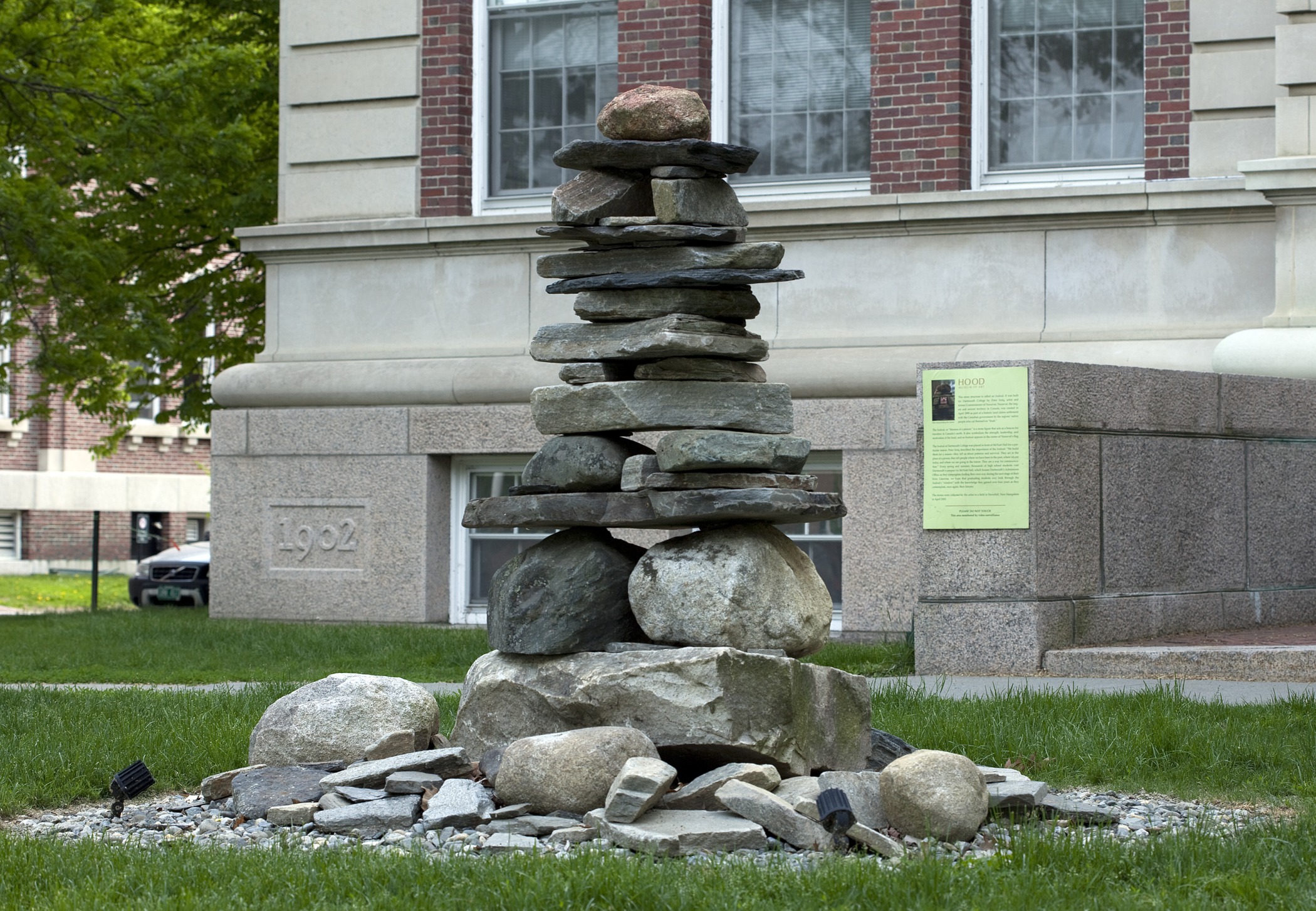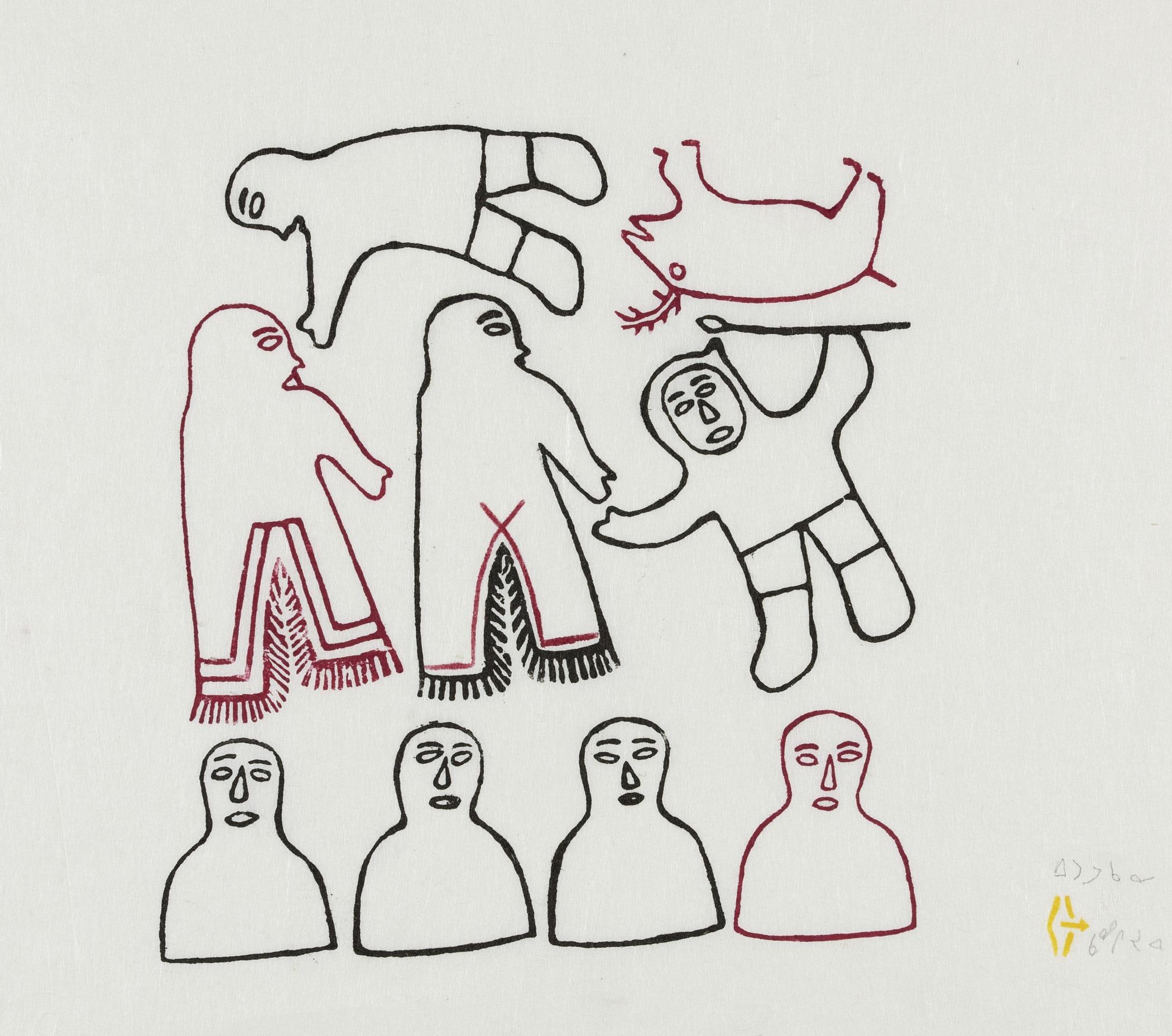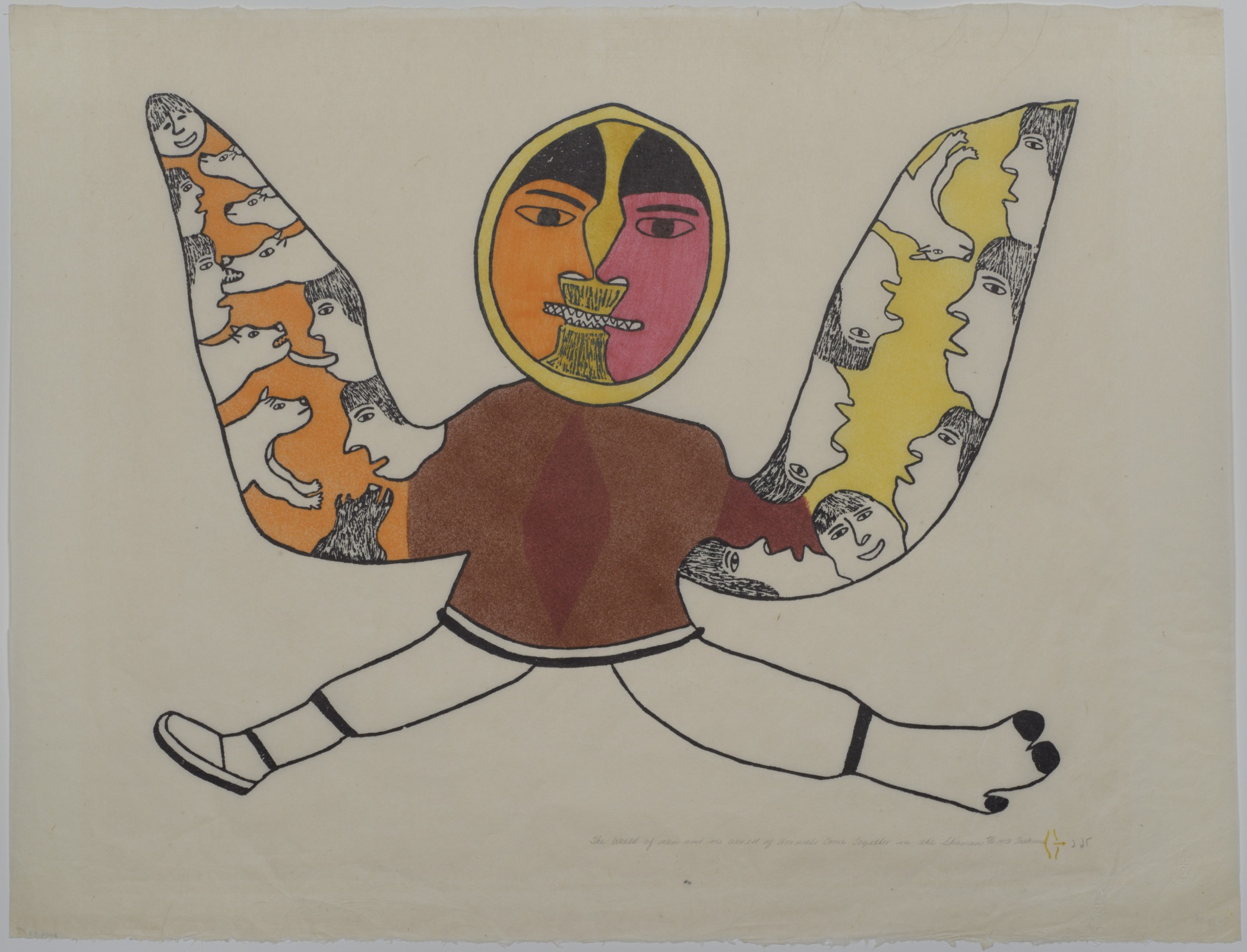Simon Tookoome, Canadian (Inuit), 1934–2010
The World of Man and the World of Animals Come Together in the Shaman
- 1973
- Stonecut and stencil print on paper, edition 45/50
- 24 7/8 × 32 15/16 in.
Hood Museum of Art, Dartmouth College: Purchased through a gift from the Friends of the Hopkins Center and Hood Museum of Art; 2007.28
visibilityLook & DiscussThis print by Simon Tookoome (Too-KOO-mee) illustrates how humans and other creatures are connected. According to legend, all humans could once transform into animals and back again. Over time, only the angakkuq (ahng-GAH-cook; plural: angakkuit), a person with special access to tuurngait (too-URN-gah-eet), or spirits, retained this ability. The Inuit pass down stories of angakkuit through oral history and through the creation of works of art.
explore the object
Many of Simon Tookoome’s prints share stories from elders about tuurngait.
He stated:
My first art was a drawing I did before I moved to Baker Lake. When I came here, I saw my sister doing drawings and making money and I envied her. From there, I started to make drawings. I tried to look at other people’s work. I took what I liked and moved toward my own style of mythology and a bit of realism and mixed it together. I did Inuit legends of angakkuit and other Inuit stories and legends… My mother was my storyteller. As I lay in bed as a child, I would ask her to tell me stories. I also had a stepfather, Tutanuaq; they were the ones that told me stories.
The angakkuq in this image is in a heightened spiritual state. He takes flight, the dynamic conversation between animal and human inscribed upon his wings. The deep cleft in his chest represents the space through which the helping spirit or familiar can exit and enter. The cloven hoof and the human foot and leg are in opposition. His three faces, one looking forward and two in profile, suggest the angakkuq’s ability to see all. The taut line of the hood of the parka is in the shape of a ceremonial drum.
meet the artist
Simon Tookoome was a renowned artist, skillful hunter, respected elder, drum dancer, camera man and interviewer for the Inuit Broadcasting Corporation, and expert with a 40-foot whip. He grew up inland along the Back River and on the edge of the sea at Gjoa Haven. When a severe caribou shortage threatened his family’s survival, he and his family moved by dog team to the settlement at Qamanittuaq (Baker Lake).
Related Objects
The Hood Museum of Art also owns two extraordinary sculptures made by Inuit sculptor Karoo Ashevak that depict the angakkuq and the powerful moment of transformation.
Karoo Ashevak, Canadian (Inuit), 1940–1974, Untitled (Spirit Figure), about 1970–74. Carved whalebone inlaid with walrus ivory, baleen, and stone, length: approx. 5 in. Hood Museum of Art, Dartmouth College: Bequest of Evelyn Stefansson Nef; 2011.25.1.
Karoo Ashevak, Canadian (Inuit), 1940–1974, Untitled (Shaman), about 1970–74. Carved whalebone inlaid with walrus ivory, baleen, and stone, height: approx. 7 in. Hood Museum of Art, Dartmouth College: Bequest of Evelyn Stefansson Nef; 2011.25.2.
Karoo Ashevak is renowned for his highly creative and expressionistic approach to carving. His work focuses on the spirit world and the concept of transformation. Untitled (Spirit Figure) captures the actual process of transformation in three-dimensional form, with its Cubist-like depiction of multiple faces. Untitled (Shaman) shows the angakkuq as a flying or swimming spirit being. Each is made from whalebone aged over 100 years. The teeth are inlaid pieces of ivory, while the eyes are made of ivory and stone.
learn more
Inuit scholar Heather Igloliorte discusses whale bone carving and the artist Karoo Ashevak.





